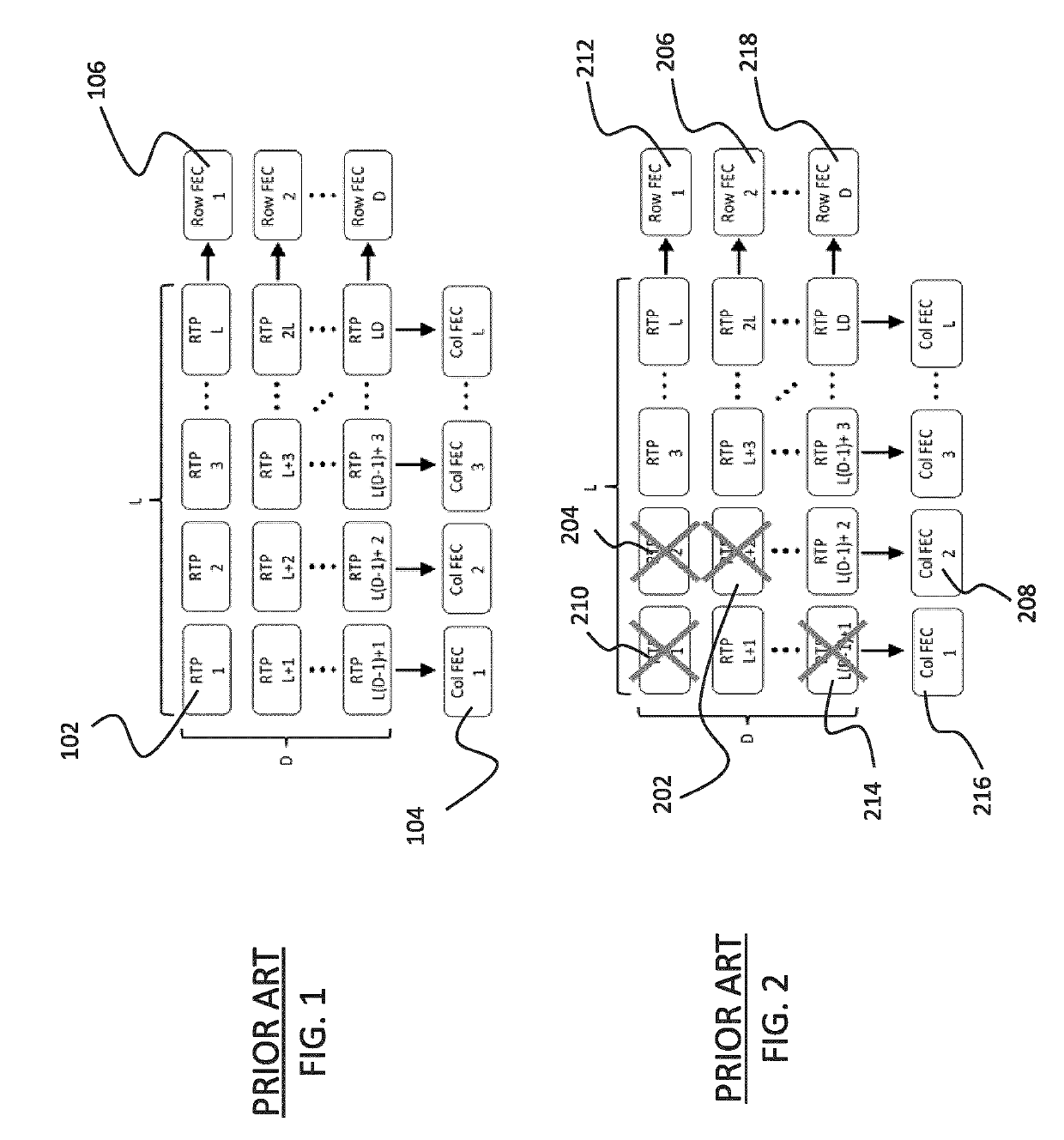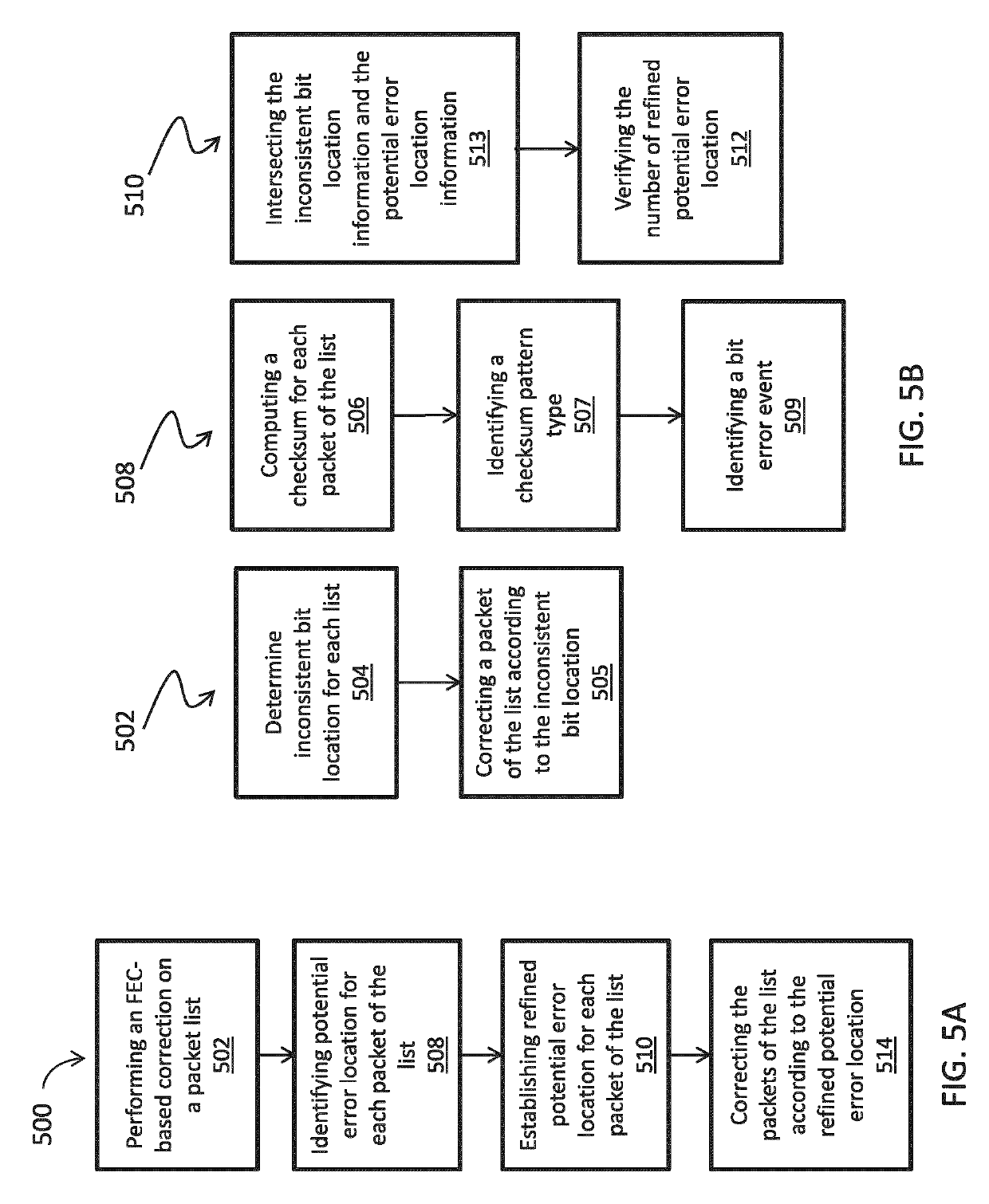Checksum-filtered decoding, checksum-aided forward error correction of data packets, forward error correction of data using bit erasure channels and sub-symbol level decoding for erroneous fountain codes
- Summary
- Abstract
- Description
- Claims
- Application Information
AI Technical Summary
Benefits of technology
Problems solved by technology
Method used
Image
Examples
Embodiment Construction
[0106]It has been discovered that there is a relationship between a computed checksum pattern type (CPT) and a bit error event (BEE) in UDP packets. Basically, the observed CPT (the observed pattern of zeros and ones in the computed checksum value) can be linked to the BEEs that caused that pattern and indicate if a single bit is in error or multiple bits are in error and also indicate the location of the error and the associated probability. For instance, a first checksum pattern type indicates a packet having a single bit “1” and fifteen bits “0”. This can be caused by one bit in error, two bits in error with same bits flipped in the same column, or two bits in error with different bits in different columns. Certain events are significantly more likely than others to create some observed CPT. For instance, if a CPT=1 is observed, it is very likely that it was caused by a single error in a specific column, and this is even more likely as the bit error rate becomes lower. Similarly,...
PUM
 Login to View More
Login to View More Abstract
Description
Claims
Application Information
 Login to View More
Login to View More - R&D
- Intellectual Property
- Life Sciences
- Materials
- Tech Scout
- Unparalleled Data Quality
- Higher Quality Content
- 60% Fewer Hallucinations
Browse by: Latest US Patents, China's latest patents, Technical Efficacy Thesaurus, Application Domain, Technology Topic, Popular Technical Reports.
© 2025 PatSnap. All rights reserved.Legal|Privacy policy|Modern Slavery Act Transparency Statement|Sitemap|About US| Contact US: help@patsnap.com



